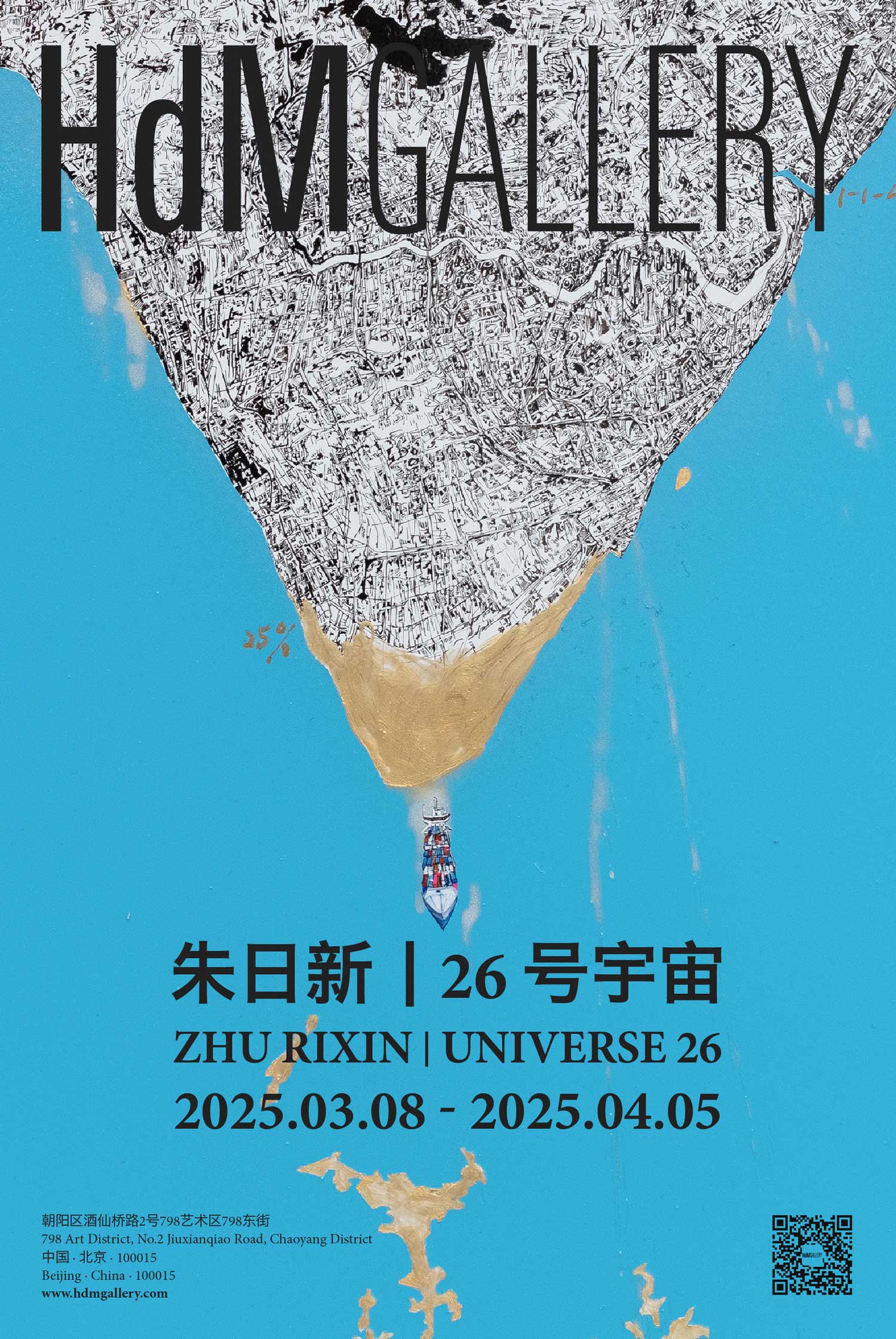HdM Gallery Square Room is pleased to announce the upcoming solo exhibition“Universe 26” by artist Zhu Rixin, opening on March 8, 2025. This exhibition unfolds through a dialogue between humans and landscapes, using the "Universe 25" experiment as its conceptual starting point. Zhu Rixin focuses on the complexity of human social behavior within the context of natural evolution, extending this inquiry into "Universe 26"—a speculative vision of a utopian new world. Through the lens of uncontrollable realities, the exhibition invites viewers to engage in a profound dialogue about the trajectory of human history and its inherent complexities. The exhibition will remain on view until April 5.
The concept of "Universe 26" inevitably evokes the experimental of "Universe 25," a study conducted in the 1970s by ethologist John B. Calhoun at the National Institute of Mental Health (NIMH) in Maryland. The experiment used a mouse population to simulate the evolution of social structures and ecological balance in a resource-abundant environment, mirroring human society. After 1,780 days, the mouse society collapsed. This serves as an almost prophetic tale of human failure, after a century of the Second Industrial Revolution, when the anticipated ideal world of machines replacing human labor and freeing up manpower had not materialized. Instead, the experiment's extremity, limitations, and pessimistic undertones forced a reckoning with the potential collapse of utopian systems. In response, theories emerged to counteract the biological fragility of "behavioral sink," including space expansion, institutional constraints, and cultural guidance as corrective measures.
Environmental historian Jared Diamond observed, "One of the most common paths to social collapse is when societies face complex problems, they respond with even more complexity, rather than simplifying and finding a fundamental solution." The attempt to combat complexity with complexity introduces significant variables. Yet, actions such as dam construction, land reclamation, and island fortification—efforts to expand living spaces and redistribute territorial resources using existing technologies—are now frequently enacted. In this exhibition, Zhu Rixin draws a parallel between these geographical interventions and cosmetic micro-procedures, likening human alterations of the environment to the "micro-adjustments" of medical aesthetics. This is both an artist's observation of cosmetic practices and a live sketch of the "micro-adjustment" reality of filling and transplantation.
Continuing his exploration of group mobility and the relationship between individuals and collectives, Zhu Rixin examines humanity's millennia-long desire for immortality and continuity from an individual perspective. In his new series, stainless-steel works created with fineliner engraving, the artist shifts his focus to humanity's resistance against geographical or natural models. The engraved marks symbolize the irreversible nature of human territorial expansion and cosmetic interventions, while also documenting the depletion and renewal sacrificed or created in the pursuit of civilizational continuity. After all, within the constraints of Earth's systemic boundaries, the key to sustaining civilization remains an ongoing dialogue between humanity and the geographical environment.

